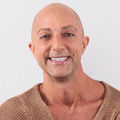To have longevity in movement (being able to play and do what you love for a very long time), mobility has to be addressed in your fitness routine. Let’s first take a look at what mobility is so we can apply this principle to how we are training. Mitch Hauschildt, the Prevention, Rehab and Physical Coordinator at Missouri State University and Founder/President of Maximum Training Solutions, explains mobility like this:
“Mobility can be defined as the ability to maintain a biomechanically advantageous position throughout a full range of motion. It is necessary for truly authentic movement. Research tells us that poor mobility is the number-one detriment to athletic performance [and] performance in general. If you are not taking the time to address each client’s mobility restrictions, you are not only setting them up for pain, but you are limiting their ability to reach their athletic, weight loss, strength or fitness goals.”
Ideally, you want to incorporate movement patterns that address and enhance mobility, while also challenging strength.
Most of us who have been training or participating in sports for any amount of time know that mobility can be our best friend or our worst enemy. Staying focused can be a challenge for me, so going into a class and rolling around or heading to a station designed just for mobility makes me want to poke my eyes out. I want to feel mentally stimulated while I work on my mobility issues, so I designed some exercises that will do just that. These exercises also challenge strength and stability in all planes of motion, so you can get more done in less time.
These strength and mobility exercises using the TRX Suspension Trainer can help you or your clients maximize training time and goals. They are designed so you can break them down and perfect each part, grooving correct movement patterns as your mobility and strength increase. These exercises take practice, so perform each one as long as you can maintain quality movement patterns and continue practicing until the complete patterns can be achieved.
Hip Extension to Bridge

Adjust the straps to mid-length. Sit on the ground with feet hip-width apart, facing the anchor point. With arms extended, grab the handles and keep the shoulders retracted (as if you are holding $100 bill under your armpit). Slowly press up from the heels, squeezing your glutes and extending your hips while bracing your core (pulling ribs toward hips) to a bridge position. Hold for a couple of beats. With the feet planted, begin to extend your thoracic spine, steering the crest of your head toward the floor. Hold this position and continue to breathe and deepen into the position, keeping the hips strongly engaged. Carefully return to bridge position, hold, and then flex at the hips to return to the starting position.
Crossing Lunge to Touch

Adjust straps to mid-calf, single-handle mode. Stand sideways to the anchor point, with the hip in line with the anchor and the outside foot in the foot cradle; externally rotate the hip. Keep thet core engaged, the spine tall, the lower tailbone toward the floor and the shoulders retracted, continue lowering until the outside arm touches floor. To progress the movement, extend the leg that is in the straps as you lower toward the floor. Try to prevent the chest and shoulders from collapsing as you touch down. Work toward opening the chest when you touch down. Drive the heel and big toe into the ground as you come to full extension of the standing leg.
Oblique Crunch to Hold

Adjust straps to mid-calf and, with your body facing away from the anchor point, place the toes in the foot cradle. Position your knees on the ground, hands under the shoulders with fingers spread wide; engage the lats and retract the shoulders. Brace the core, squeeze the glutes and press the feet in to the foot cradles to rise up into plank position. Keep the ears, shoulders, hips, knees and ankles all in one line. Slowing bring both feet toward the back of one arm, hold and slowly count to four before returning to plank; hold and move to the other side and repeat.
Half-kneeling Lift to Side

Adjust straps to mid-length. Center your body to the anchor point in a half-kneeling position, with your front foot lined up with the back knee (as much as possible). This position requires more stability. Flex the back toes and press in to the floor. Bring the handles to rib height, firmly pressing into the handles with open hands to engage the core. Slowly lift the front foot (keeping the foot flexed) and hover over the floor about an inch or two; hold for a few breaths. While keeping hips engaged and square to the anchor, slowly move the leg to the side and hold. Return the leg to the starting position, hold and extend the leg while keeping the foot above the floor. Hold and then flex the knee and return to the half-kneeling position. Repeat this pattern on the other side.
Abducted Plank to Push-up


Adjust straps to mid-calf and, with your body facing away from the anchor point, place the toes in the foot cradle. Position the knees on the ground and the hands under the shoulders with fingers spread wide; engage the lats and retract the shoulders. Brace the core, squeeze the glutes and press the feet in to the foot cradles to rise up into plank position. Keep the ears, shoulders, hips, knees and ankles all in one line. Press in to the foot cradles, spread the legs as wide as you can, and bring the knees toward the elbows and circle in to the chest; hold for a beat. Extend back to a solid plank (no sagging) and add a push up. Complete as many repetitions as you can while maintaining excellent form.




 by
by 











 by
by